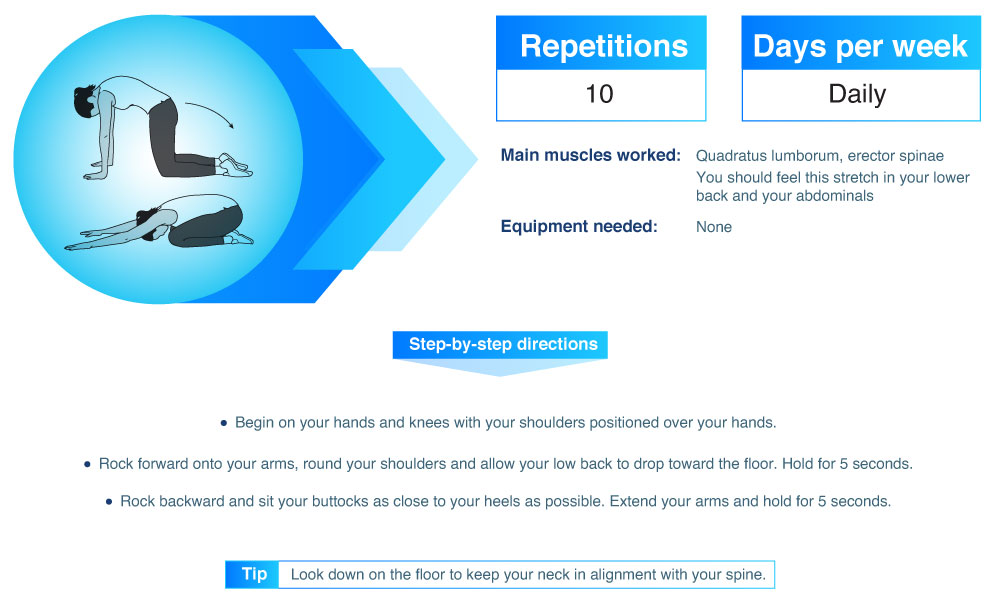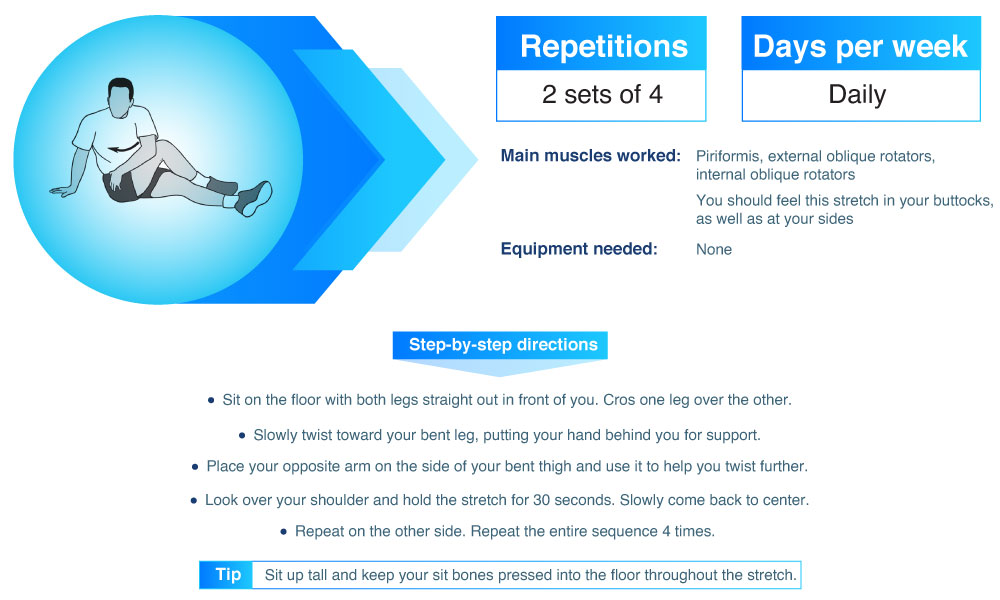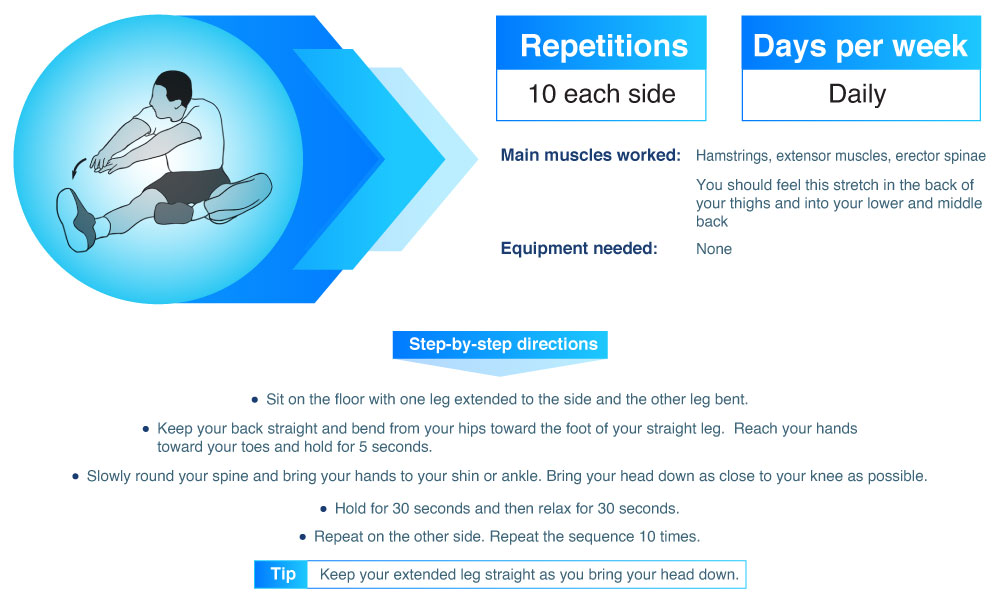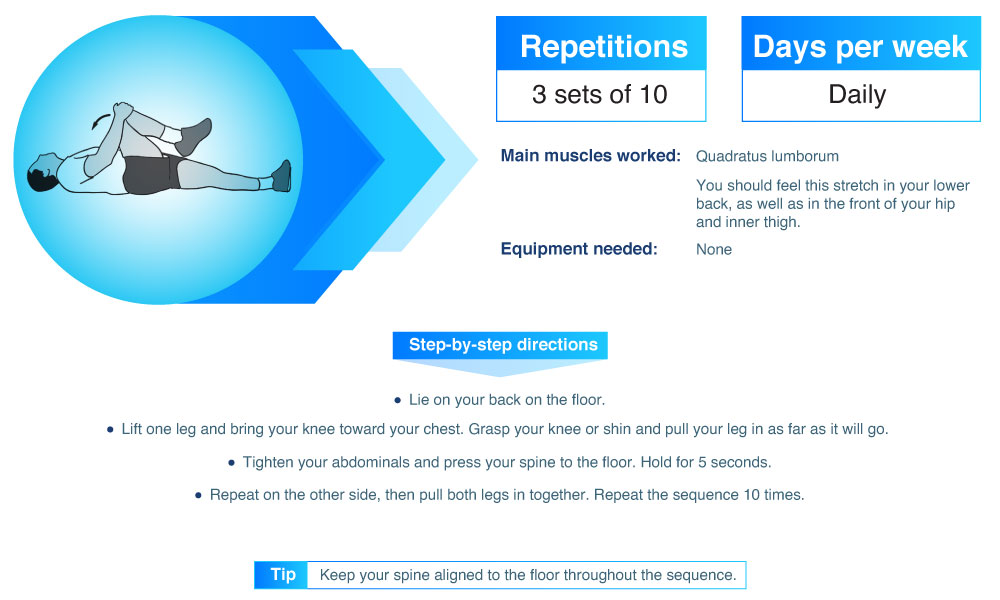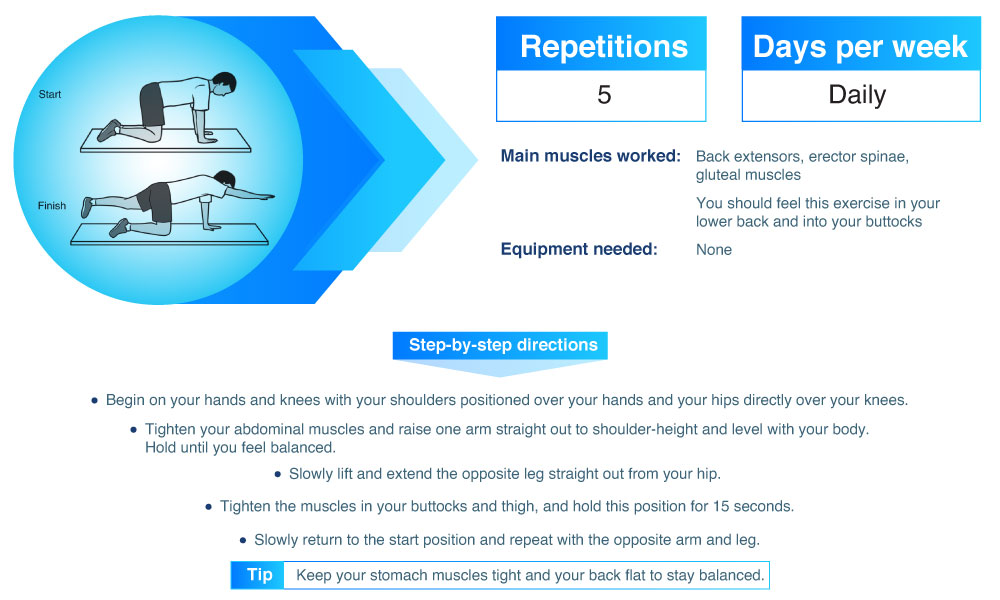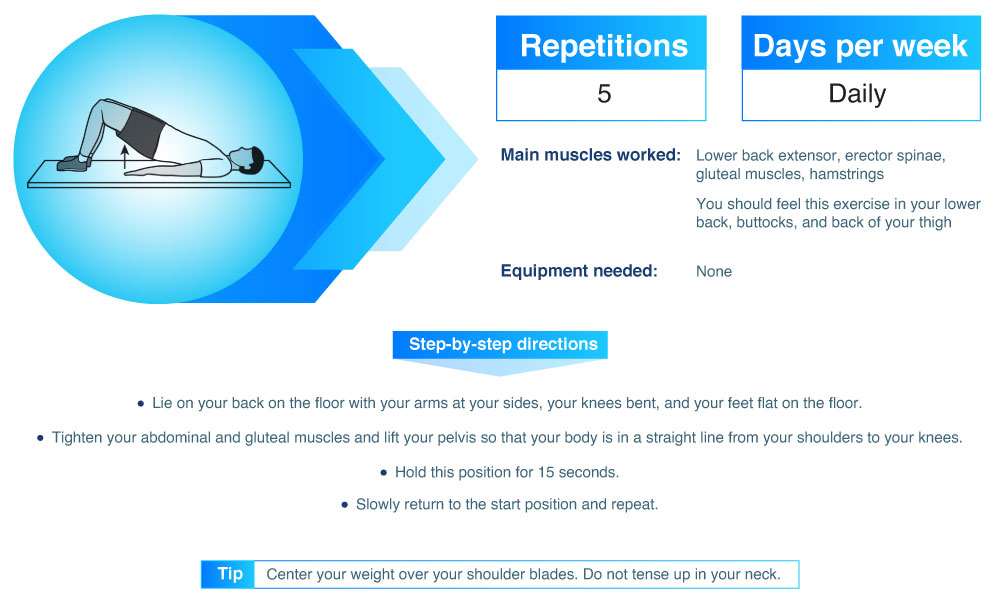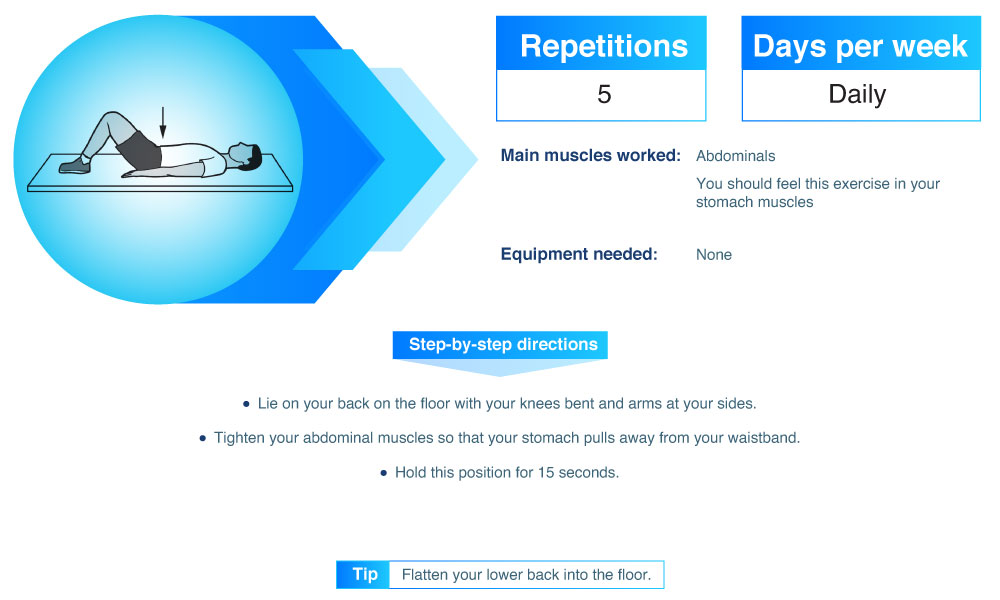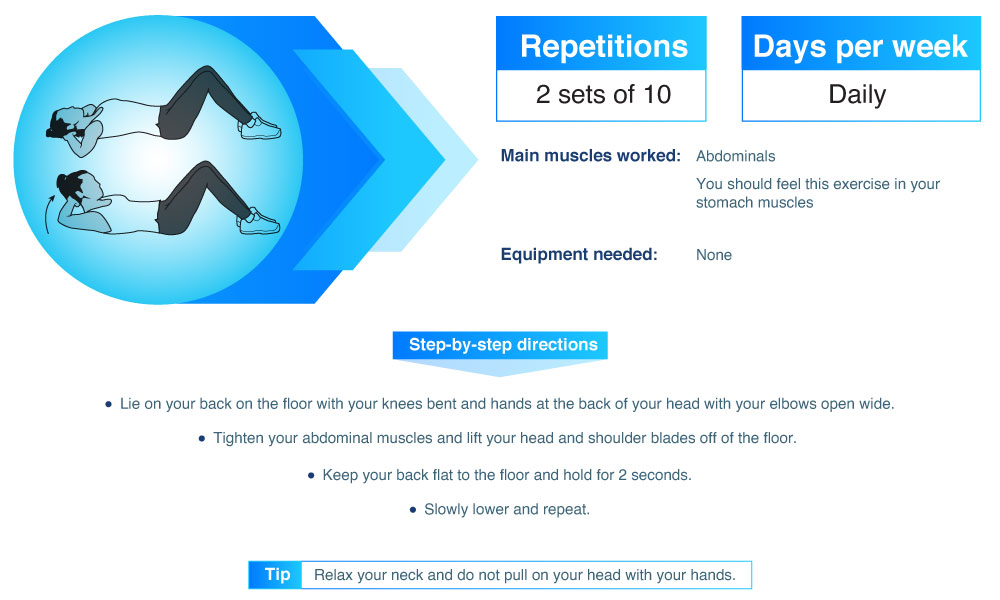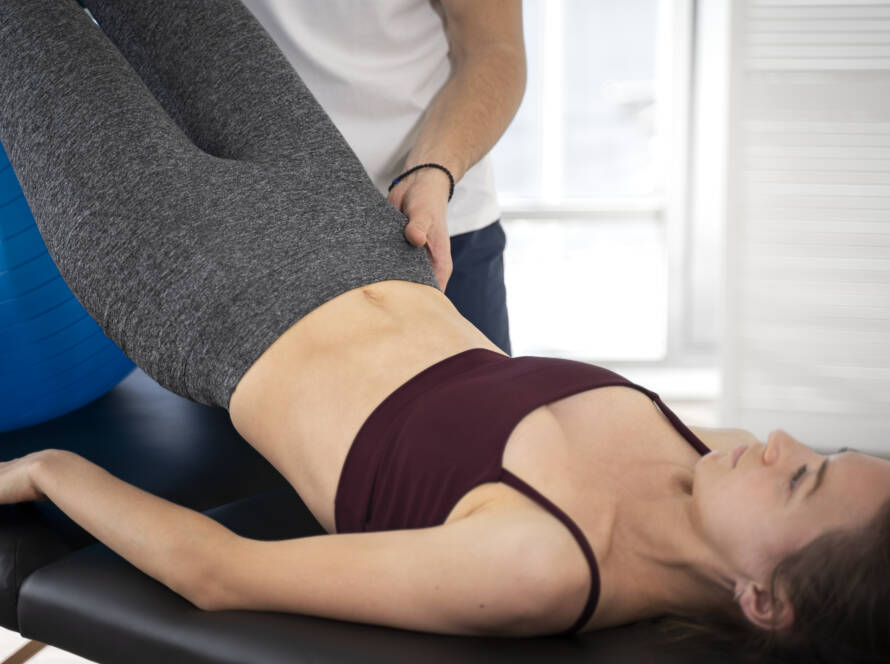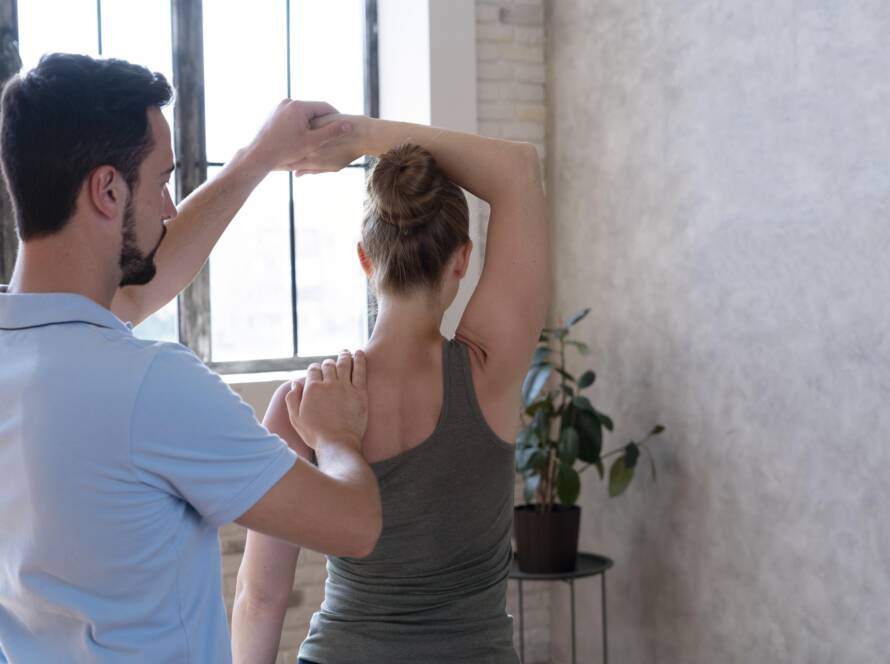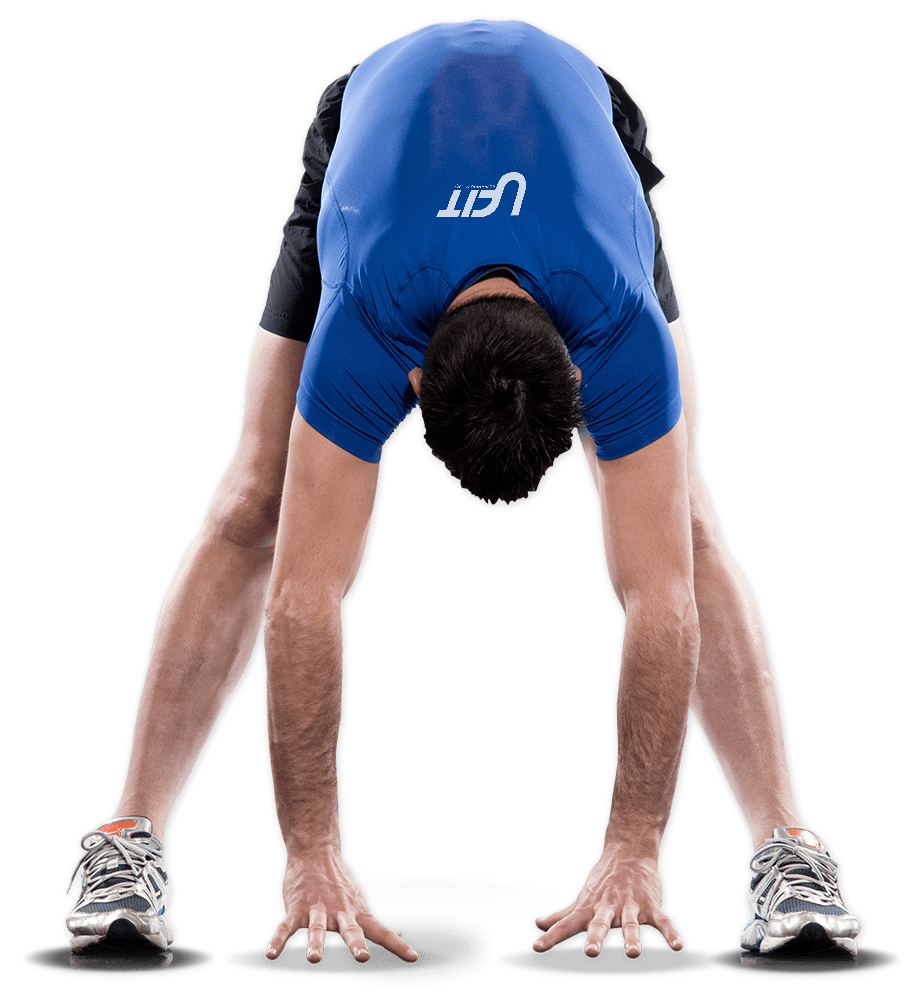

After an injury or surgery, an exercise spine conditioning program will help you return to daily activities and enjoy a more active, healthy lifestyle.
F
ollowing a well-structured spine conditioning program will also help you return to sports and other recreational activities.
This is a general conditioning program that provides a wide range of exercises. To ensure that the program is safe and effective for you, it should be performed under your doctor’s supervision. Talk to your doctor or physical therapist about which exercises will best help you meet your rehabilitation goals.
Strengthening the muscles that support your spine will help keep your back and upper body stable. Keeping these muscles strong can relieve back pain and prevent further injury.
Stretching the muscles that you strengthen is important for restoring range of motion and preventing injury. Gently stretching after strengthening exercises can help reduce muscle soreness and keep your muscles long and flexible.
The muscle groups targeted in this conditioning program include:
- Cervical spine (neck)
- Trapezius (neck and upper back)
- Latissimus dorsi (side and middle back)
- Back extensors and erector spinae (middle and lower back)
- Quadratus lumborum (lower back)
- Abdominals
- External oblique rotators (side and lower back)
- Internal oblique rotators (side and lower back)
- Piriformis (buttocks)
- Gluteus maximus (buttocks)
- Gluteus medias (buttocks)
- Hamstrings (back of thigh)

Length of program:
This spine conditioning program should be continued for 4 to 6 weeks, unless otherwise specified by your doctor or physical therapist. After your recovery, these exercises can be continued as a maintenance program for lifelong protection and health of your shoulders. Performing the exercises two to three days a week will maintain strength and range of motion in your back.
Getting Started
Before doing the following exercises, warm up with 5 to 10 minutes of low impact activity, like walking or riding a stationary bicycle.

After the warm-up, do the stretching exercises shown below before moving on to the strengthening exercises. When you have completed the strengthening exercises, repeat the stretching exercises to end the program.

You should not feel pain during an exercise. Talk to your doctor or physical therapist if you have any pain while exercising.

If you are not sure how to do an exercise, or how often to do it, contact your doctor or physical therapist.




